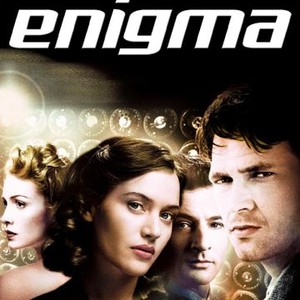

But nothing could be further from the truth the reason women rarely participated at the higher levels of codebreaking was largely the result of male prejudice, not of female inability.Įven well before WW2, a several talented and determined women showed great codebreaking skills. This could suggest that codebreaking is an exclusively male field, one to which women were unfitted to contribute. In the USA, the list might include William Friedman, Joe Desch, Elvin Urquhart, and Frank Rowlett. Alan Turing, Gordon Welchman, Alistair Denniston, Dillwyn Knox, John Tiltman, Hugh Alexander, Stuart Milner-Barry, and Bill Tutte are names which might figure in a brief list of leading British codebreakers. Unfortunately for the Kriegsmarine, the more complex 1944 edition didn't came into service on time to change the odds for the decimated U-boat fleet in the Atlantic.Without doubt, if you ask someone to name some WW2 codebreakers, all the names they are likely to come up with will be those of men. This was a list with all existing U-boats and trigrams, three letter words, assigned to each U-boat. In addition, to sign messages or identify other U-boats in a message, the Kriegsmarine used a codebook called Marinefunknamenliste or Naval Callsign List. Heft II, called Buchgruppenheft, was used to convert four-number groups into four-letter words. Heft I contained the Satzbuch or sentence book, to convert sentences into four-figure groups, and the Schlusselzahltafel or key number table. The Kurzsignalheft 44 consisted of two parts, Heft I and II. This edition was more complex than the previous. If the codebooks could be captured, they were destroyed by throwing them into water. The Kurzsignalheft codebooks were printed on special paper with red, water soluble, ink.

Another codebook contained the Kenngruppen and Spruchschlussel, resp key identification and message key, that is the start position to the rotors of the Enigma. All possible situations and topics were listed. Logistic matters such as refueling and rendezvous with supply ships, positions and grid lists, names of harbors, countries, weapons, weather conditions, enemy positions and ships, date and time tables. All kinds of expressions in many different topics were listed. The Kurzsignalheft contained tables that converted sentences into four-letter groups. The two most important codebooks were the Kurzsignalheft for all kinds of operational messages, and the Wetterkurzschlussel for weather reports. To apply the Kurzsignale, the Kriegsmarine used several different codebooks. Each Kurzsignal message, or Beta signal, had a strict format, containing an introduction, an identification to the key, and the message, encrypted with the Enigma cipher machine. Various editions of Kurzsignalhefte, the Short Signal Codebooks, were applied during the war. From 1942 on, U-boats commonly used the Beta signals. An Alpha signal was a small message, usually containing a single four-letter groups. If the communications were compromised, this would reveal German naval positions and result in Allied tactical countermeasures or active hunt on the U-boats.ĭuring the War, several different Kurzsignale methods were used on U-boats. The U-boats relied completely on secure communications to receive their orders, coordinate patrolling on sea, and their Wolfpack tactics. Of course, secure communications were a most vital part of the supremacy of the Kriegsmarine in the Atlantic. The Kriegsmarine procedures on sending messages with the Enigma cipher machine were far more complex and elaborate than the Wehrmacht and Luftwaffe procedures. This way, the German Navy made it harder to fix positions with Huff Duff. The use of Kurzsignale decreased the length of the Morse messages enormously, often reducing broadcasting time to less then one minute. This was an important tactical advantage in the Atlantic, revealing the positions of German ships and U-boats. This system enabled Allied Forces to accurately determine the position of German transmissions. In general, the Kurzsignale were four letter groups representing all kinds of sentences regarding tactical information such as course, enemy reports, position grids or weather reports.Īn important reason for the Kriegsmarine to apply these Kurzsignale was the Allied use of High Frequency Direction Finding, also called HFDF or Huff Duff. The Kurzsignale were an important part of the complex Kriegsmarine communications system. During the Second World War the German U-boats used Kurzsignale or Short Signals to send their messages.


 0 kommentar(er)
0 kommentar(er)
